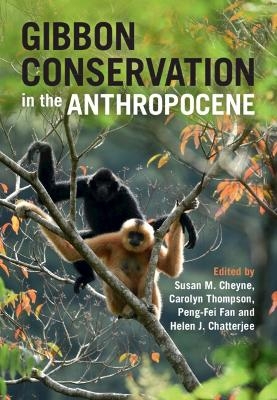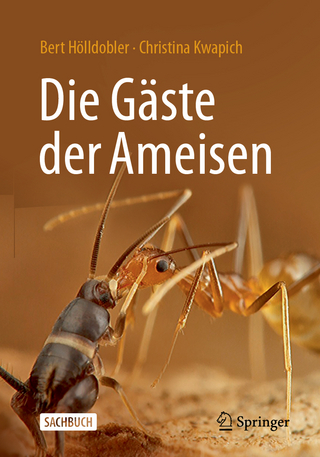
Gibbon Conservation in the Anthropocene
Cambridge University Press (Verlag)
978-1-108-47941-7 (ISBN)
Hylobatids (gibbons and siamangs) are the smallest of the apes distinguished by their coordinated duets, territorial songs, arm-swinging locomotion, and small family group sizes. Although they are the most speciose of the apes boasting twenty species living in eleven countries, ninety-five percent are critically endangered or endangered according to the IUCN's Red List of Threatened Species. Despite this, gibbons are often referred to as being 'forgotten' in the shadow of their great ape cousins because comparably they receive less research, funding and conservation attention. This is only the third book since the 1980s devoted to gibbons, and presents cutting-edge research covering a wide variety of topics including hylobatid ecology, conservation, phylogenetics and taxonomy. Written by gibbon researchers and practitioners from across the world, the book discusses conservation challenges in the Anthropocene and presents practice-based approaches and strategies to save these singing, swinging apes from extinction.
Susan M. Cheyne is the co-director of Borneo Nature Foundation International and Vice-Chair for IUCN Primate Specialist Group Section on Small Apes. She received the 2017 Marsh Award for Conservation Biology in partnership with the Zoological Society of London. She is also a Royal Geographical Society Fellow and an IUCN Cat Specialist Group member. Carolyn Thompson is an early career interdisciplinary researcher with University College London and the Zoological Society of London's Institute of Zoology. She has more than fifteen years' experience working in the field of primatology. The majority of her research has focused on Asian primates, with the exception of lemurs in Madagascar. Her research interests include human-primate interactions, ethnoprimatological methods, conservation education, and primate conservation. Carolyn is the Student Representative for the IUCN Section on Small Apes. Peng-Fei Fan is a Professor in the School of Life Sciences, Sun Yat-Sen University, Guangzhou, China. He has been studying behaviour, ecology, and conservation of primates, mostly gibbons, in China since 2002. Along with his colleagues, he discovered the white-cheeked macaque (Macaca leucogenys) and skywalker hoolock gibbon (Hoolock tianxing). He has published more than 80 peer-reviewed papers and currently serves as Associate Editor or Editorial Board Member for five scientific journals. Helen J. Chatterjee is a Professor of Biology at University College London, UK. Her research includes biodiversity conservation and evidencing the impact of natural and cultural participation on health. Helen serves on the Executive Committee for the IUCN Section on Small Apes. In 2015 she received an MBE for Services to Higher Education and Culture.
Preface David Chivers; Introduction Susan M. Cheyne, Helen J. Chatterjee, Carolyn Thompson and Peng-Fei Fan; 1. Taxonomy, ecology and conservation of Cao Vit Gibbon (Nomascus nasutus) since its rediscovery Peng-Fei Fan and Chang-Yong Ma; 2. Conservation status of the northern Yellow-Cheeked Crested Gibbon (Nomascus annamensis) in Vietnam: an update Duc Minh Hoang, Bang Van Tran, Chuong Van Hoang and Herbert H. Covert; 3. Strategies for recovery of the Hainan Gibbon (Nomascus hainanus): twenty years of multidisciplinary conservation effort Bosco Pui Lok Chan and Yik Fui Philip Lo; 4. Gibbons in the anthropocene: lessons from a long-term study in Indonesia Susan M. Cheyne, Abdulaziz K, Supiansyah, Twentinolosa, Adul, Claire J. H. Thompson, Lindy Thompson, Reychell Chadwick, Helene Birot, Carolyn Thompson, Cara H. Wilcox and Eka Cahyaningrum; 5. Demography of a stable Gibbon population (Hylobates moloch) in high-elevation forest on Java Susan Lappan, Rahayu Oktaviani, Ahyun Choi, Soojung Ham, Haneul Jang, Sanha Kim, Yoonjung Yi, Ani Mardiastuti and Jae Chun Choe; 6. A tale of two Gibbon studies in Thailand Sompoad Srikosamatara and Intanon Kolasartsanee; 7. Accessibility as a factor for selecting conservation actions for Pileated Gibbons (Hylobates pileatus) Intanon Kolasartsanee and Sompoad Srikosamatara; 8. Calling from the wild: Mentawai Gibbon conservation fieldwork Arif Setiawan and Damianus Tatteburuk; 9. Demography and group dynamics of Western Hoolock gibbons (Hoolock hoolock) in a community conserved village population in Upper Assam, India Jihosuo Biswas, Diplob Chutia, Jayanta Das, Joydeep Shil and H. N. Kumara; 10. Challenges and prospects in the conservation of Hoolock Gibbons in India Dilip Chetry, Rekha Chetry and Parimal Chandra Bhattacharjee; 11. Gibbons of Assam: impacts of environment and anthropogenic disturbance Jayashree Mazumder; 12. Movement ecology of siamang in a degraded dipterocarp forest Christopher D. Marsh, Stephanie A. Poindexter, Ross A. Hill, Matthew G. Nowak, Abdullah Abdullah and Amanda H. Korstjens; 13. Sympatric Gibbons in historically logged forest in North Sumatra, Indonesia Emma L. Hankinson, Vincent Nijman, Amanda H. Korstjens, Matt G. Nowak and Ross A. Hill; 14. Adopting an interdisciplinary biosocial approach to determine the conservation implications of the Human-Gibbon Interface: a systematic review Carolyn Thompson, Helen J. Chatterjee, Samuel Turvey, Susan M. Cheyne and Peng-Fei Fan; 15. Listen to the people, hear the Gibbons sing: the importance of incorporating local people's perceptions in conservation Jaima H. Smith, Anton Ario, Rahayu Oktaviani, Arif Setiawan, Agung Gunawan and Vincent Nijman; 16. Long-Term outcomes of positive cultural value for biodiversity: historical insights from Chinese Gibbons Samuel Turvey; 17. Gibbon phylogenetics and genomics Lucia Carbone, Mariam Okhovat and Christian Roos; 18. The use of microsatellites in the management of captive Gibbons Lauren Lansdowne, Matyas Liptovszky, Kristiana Brink, Katie Dripps, Vivienne Li, Ed Hollox and Richard Badge.
| Erscheinungsdatum | 03.04.2023 |
|---|---|
| Zusatzinfo | Worked examples or Exercises |
| Verlagsort | Cambridge |
| Sprache | englisch |
| Maße | 176 x 250 mm |
| Gewicht | 760 g |
| Themenwelt | Naturwissenschaften ► Biologie ► Humanbiologie |
| Naturwissenschaften ► Biologie ► Ökologie / Naturschutz | |
| Naturwissenschaften ► Biologie ► Zoologie | |
| ISBN-10 | 1-108-47941-3 / 1108479413 |
| ISBN-13 | 978-1-108-47941-7 / 9781108479417 |
| Zustand | Neuware |
| Informationen gemäß Produktsicherheitsverordnung (GPSR) | |
| Haben Sie eine Frage zum Produkt? |
aus dem Bereich


